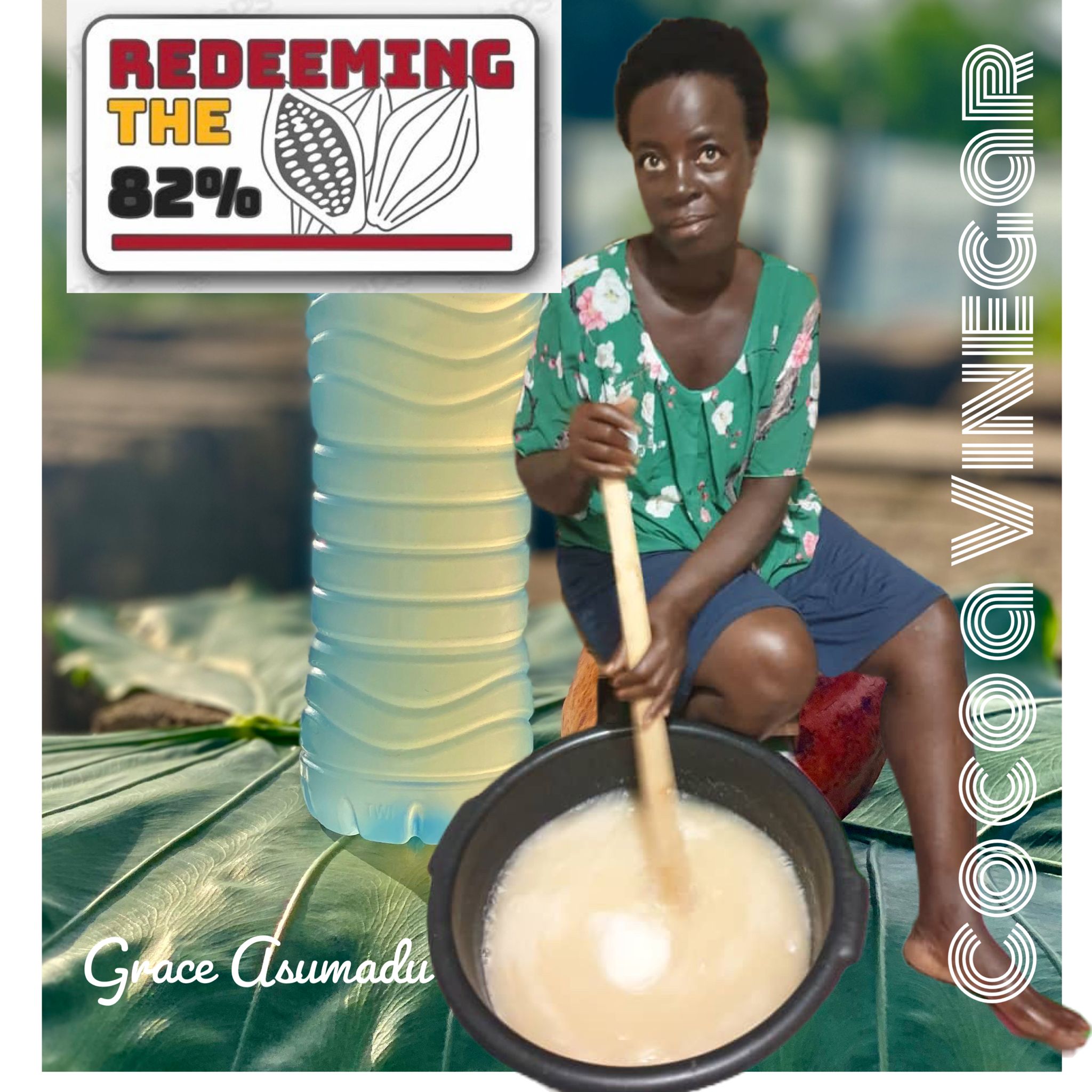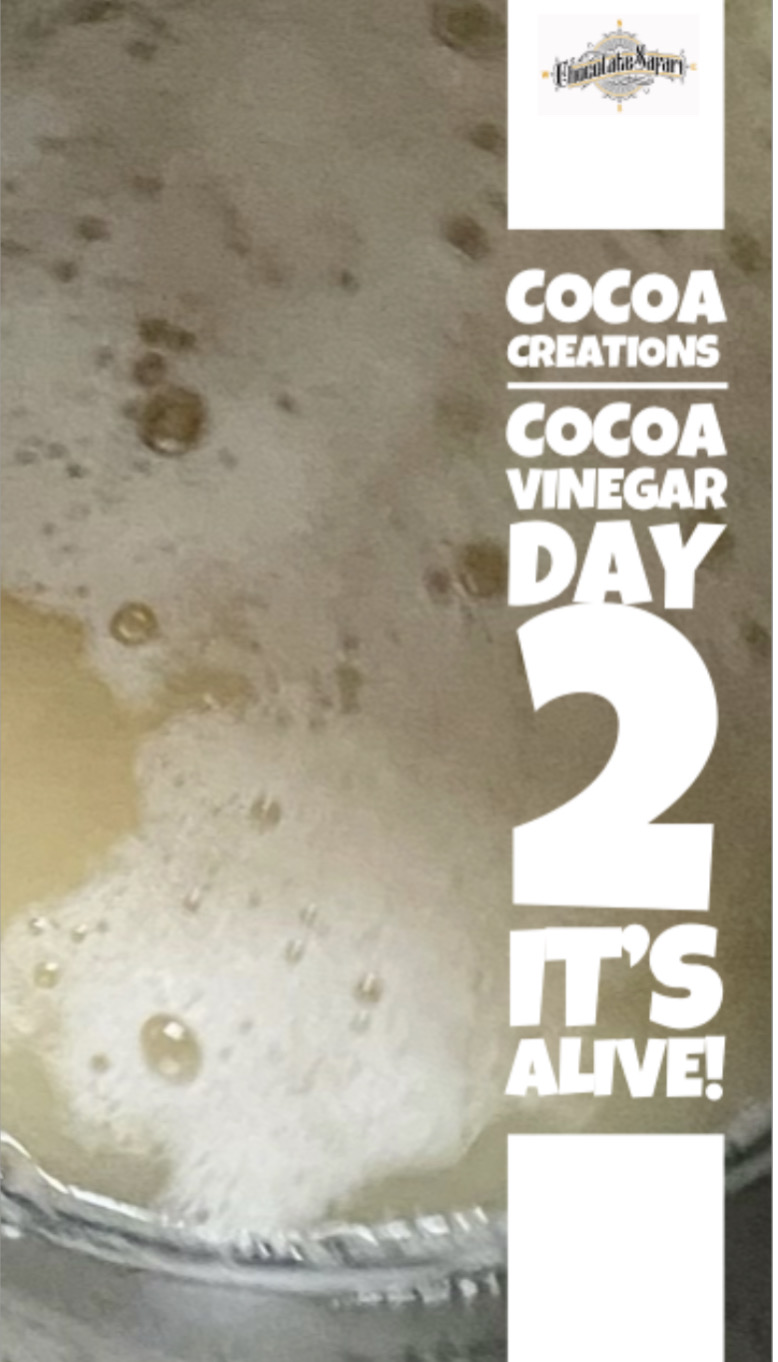 Two things need a little special attention when you are making vinegar:
Two things need a little special attention when you are making vinegar:
Oxygen and temperature.
Oxygen is spread throughout the mixture by stirring it daily and further by letting air reach the fluid through a cheesecloth filter, which is used in place of the lid.
The temperature of fermenting cocoa needs to be kept between 15 and 30 °C. It’s difficult to produce a usable vinegar at lower temperatures and higher ones can interfere with the formation of the “mother." (Mother of vinegar is a mat that forms on the bottom of fermenting wine that has gone bad.)
Don’t ever use metal containers; the acid in the mixture will corrode metal or aluminium objects.
It’s best to use glass, plastic, wood, enamel, containers for making and storing vinegar.
What we hope to achieve is:
A clean vinegar from fresh cocoa juice (sweatings)
Convert all the fruit sugar to alcohol. (Yeast fermentation.)
Convert all the alcohol to acetic acid. (Acetic acid fermentation.)
Clarify the acetic acid to prevent further fermentation and we should have amazing cocoa vinegar.
 Step 1—Making Vinegar
Step 1—Making Vinegar
Cocoa pods should be collected and opened on the same day and have any debris, removed.
Next, place the fruit in a strainer basket inside a container with a tap In the bottom. Add a little water to help wash the juice off the beans.
Use a cheesecloth (flour cloth) to strain the juice which can be chilled, then served as fresh healthy cocoa juice
Steps 2 and 3—Making Alcohol and Acetic Acid
Pour all the liquid into one or more containers to about three-quarters full; don’t close the lids, but cover them with cheesecloths (flour cloth)
Stir the mixture daily.
Keep the containers away from direct sunlight and maintain the temperature at 15-30 °C. Full fermentation will take about 3 to 4 weeks.
Near the end of this period, you should notice a tell-tale vinegar-like smell. Taste sample daily until the desired strength is reached.
Step 4—Filtering
When the vinegar is fully fermented, filter the liquid through several layers of fine cheesecloth (flour cloth) or filter paper—a coffee filter works well for this. This removes the mother of vinegar, preventing further fermentation or spoilage of the product.
Step Five --Storing Your Vinegar
The vinegar is now ready for storage in separate, capped containers. Stored vinegar will stay in excellent condition almost indefinitely if it is pasteurised.
It’s simple to pasteurise; you just need to heat the vinegar before pouring it into sterilized bottles, then place in a hot water bath. In both cases, the temperature of the vinegar must reach at least 65 °C to pasteurise the product and should not exceed 76 °C. Use a cooking thermometer to ensure the correct temperature is met.
Cool the vinegar, store in containers label and date and store at room temperature out of direct sunlight.
